Maintenance of wildflower meadows is an important consideration. In this month’s timely blog, we’re sharing some of our best-practice insights with you.
Wildflower meadows require minimal maintenance – this is one of their many benefits. However, every autumn your meadow will require some attention.
With the months of September and October becoming increasingly milder, we are finding that many are choosing to push their wildflower maintenance back to mid-October or even later. However, do be aware that our grass free Native Enriched turf does require a cut by late September. This will allow the area to grow back before the weather turns colder and gives a reasonable amount of coverage over the course of the winter months.
As part of our extensive Research & Development undertaking, we focus on different cutting and removal regimes for wildflower areas to better understand the impact on growth, health and species diversity. Over time, this has allowed us to continue to update our best-practice advice on the best techniques for different sites and circumstances.
No two meadows will grow in the same way or even at the same rate, with the mix of flowers and grasses that flourish varying year-on-year. With temperatures creeping above the seasonal average and sporadic rainfall, some meadows may have their life cycle accelerated, going to seed quicker, whilst others may have an extended flowering season. So how best to cut?
Step-By-Step Cutting Guide
Cutting can be achieved by either using a manual or powered scythe, hedge trimmer or strimmer and raking the clippings off to compost. Alternatively, a flail mower, such as a Profihopper, may be used with cuttings collected as you go.
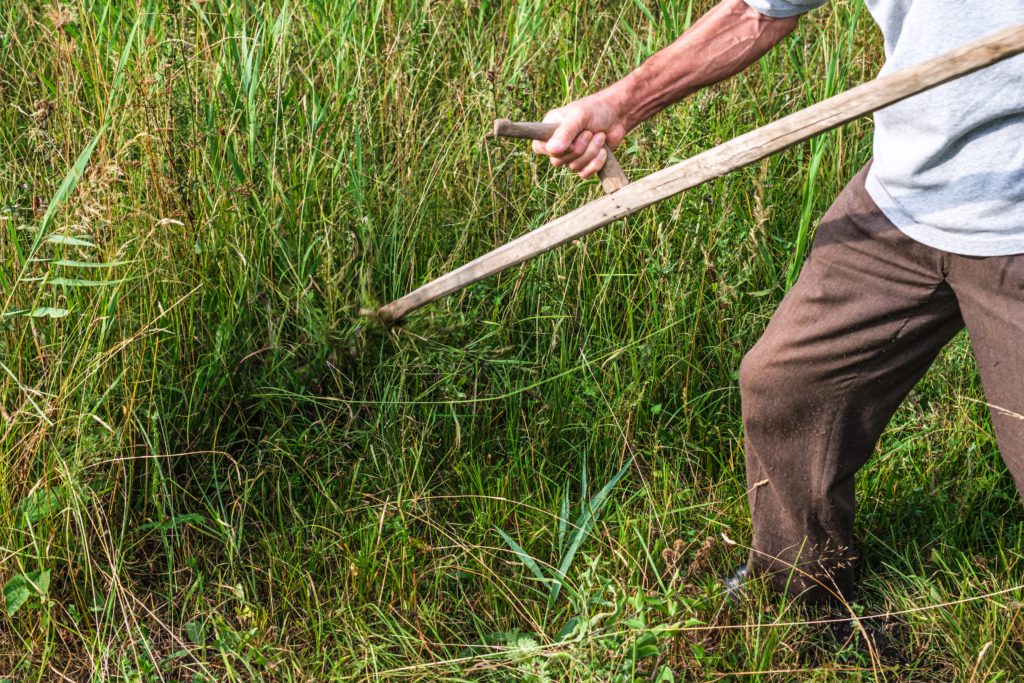
Once you have cut the tall, woody material, a rotary mower on a high setting can be used to go over the area again to neaten it up and collect the final cuttings. Whichever method you choose, make sure the tools are sharp or use tools that have reciprocating blades to get an efficient clean cut and reduce the need to go over the same area multiple times.
Cutting the plants back to 1 to 2 inches (25mm to 50mm) in length is a vital part of their life-cycle and ensures that re-growth will continue year-on-year. The most important part of a maintenance cut is to ensure you take all of the clippings away. In order to control grasses in your meadow, nutrient depletion is vital, and any rotting material left on the meadow will only enrich the soil.
The cutting of your meadow should ideally take place when the wildflowers have set and shed their seed. Not only does this tidy up the area for the onset of winter, but it also stops the senesced summer growth from covering the growing plant in a layer of rotting plant material. An open sward over the winter ensures healthy, disease-free plants which can benefit from what light is available to them during these months.
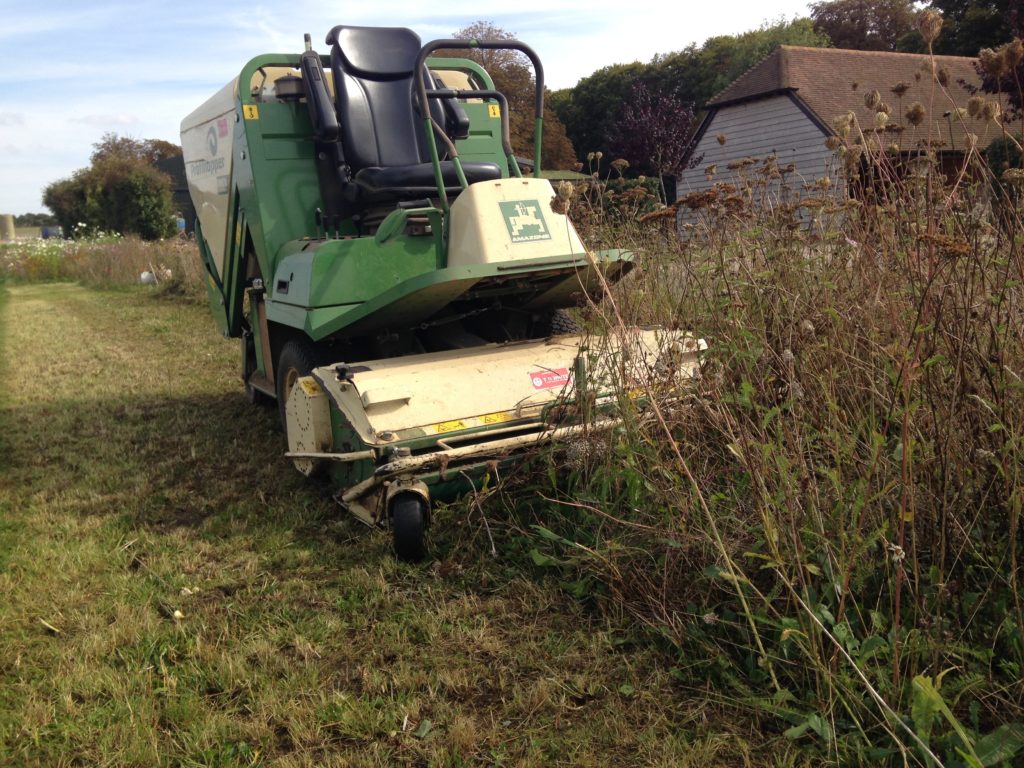
When you do decide to give your meadow its annual cut, it is always advisable to choose a dry day to cut the meadow back. Dry cuttings are easier and cleaner to handle. You may find that your meadow starts to grow again; this is because some species will be quick to utilise any freshly created space, thus taking advantage of the new opportunity that they have been given. New growth, post-cut, is very acceptable and is the last chance the meadow has to green-up, ready for the winter when it will become dormant.
If you have a larger sized meadow, it is preferable to cut in stages to be kinder to wildlife and allow any mammals or insects to translocate; consider leaving a neighbouring strip that is left for a month or so before cutting.
As spring approaches, the wildflowers and grasses will be in the perfect position to develop flowers and seed heads quickly to repeat their perennial cycle, thus guaranteeing a beautiful and biodiverse wildflower meadow year after year.
Cutting Regimes
In terms of how often to cut, we have trialed various cutting regimes over the years, with our experiences and comments noted below:
Zero-Cut:
This is not a long-term option for wildflower meadows as, in time, the meadow will get taken over by shrubs and then trees, with the meadow finally becoming a wood. Without a cut and remove, the number of plant species will decline. Another reason to avoid a zero-cut regime is aesthetics; for around 6 months of the year the meadow will look very scruffy!
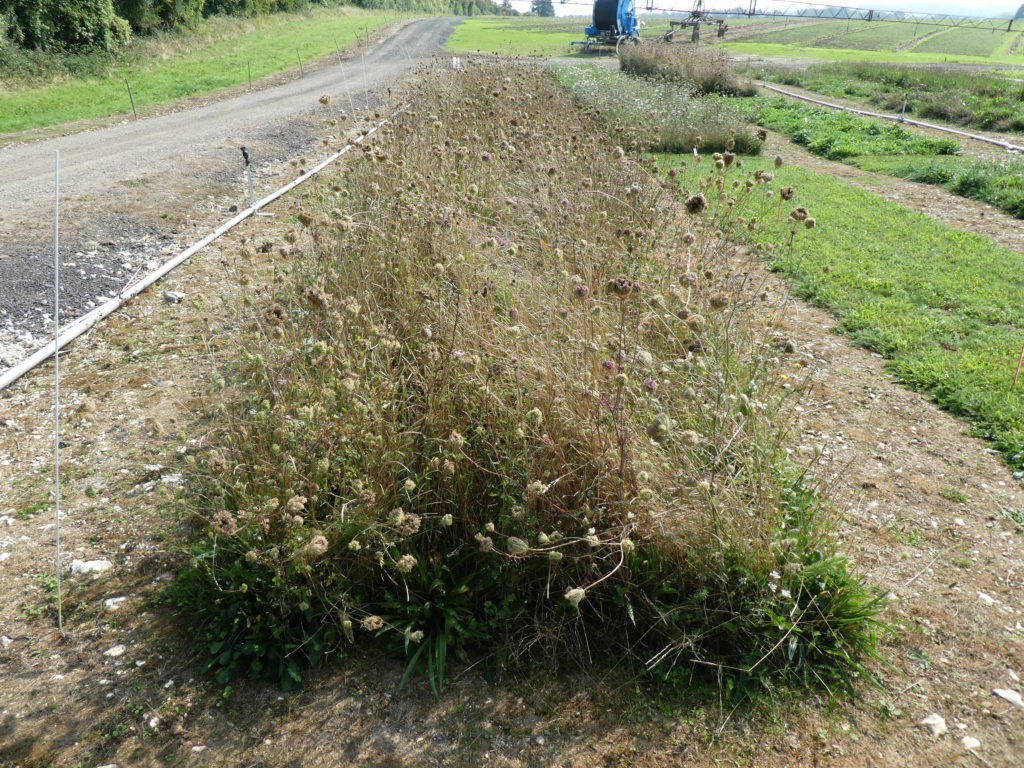
One-Cut:
One-cut, generally in the autumn, is the cutting regime used by many. It is a low-cost option and is beneficial for wildlife as there is habitat to provide food and shelter through the spring, summer and early autumn months when animals are most active.
Cosmetically, there can be a scruffy look from August to the cutting date although this does depend on how fertile the soil is. Thus, one-cut regimes best suit meadows where soil fertility is poor. Aim to complete the cut reasonably early in the autumn. Leaving it too late means that the meadow has no time to regenerate before it becomes completely dormant in the winter and this will result in a slow start the following spring as there is little plant leaf area to promote early spring growth.
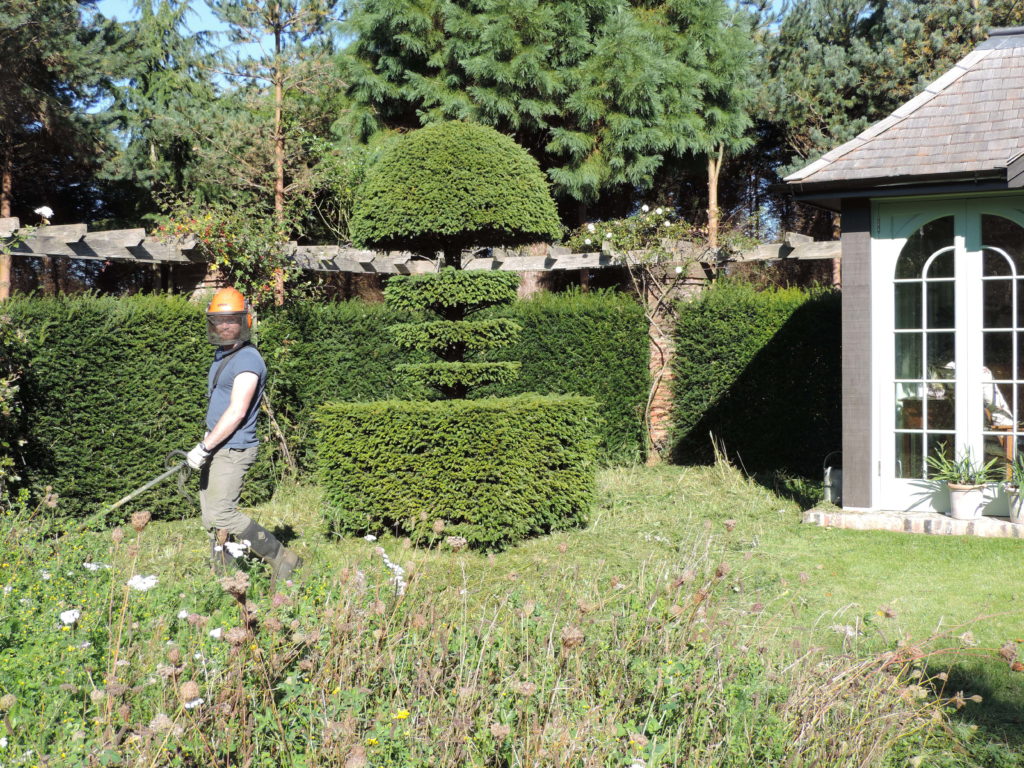
Two-Cuts:
A two-cut regime is well worth considering for a number of reasons. This regime is most useful when soil fertility is high. Cutting in late May/early June, the first ‘high’ cut should be to approximately 8 to 10 inches off the ground (200mm to 250mm) to remove the flower heads but leaving enough plant stems and leaf area to regenerate. Once the cutting has been completed and all cuttings removed, give the area a good soaking with water to encourage the next flush of growth. Introducing this early summer cut and removal will mean your second Autumn cut and removal will be later that year, up to mid-October. This ensures that both cuts take off the maximum amount of green material and this is a way to ensure the removal of the most amount of nutrients to help reduce overall soil fertility.
After several years soil nutrition will be significantly reduced which will ensure a lovely open meadow that maintains species diversity and maximises colour and variety.
The two-cut method can also help to keep the meadow looking very tidy and extends the time the meadow is in flower. As the early spring flowers start to senesce, the early cut removes that first flush of plant material. This then regrows quickly to provide flowers for the summer and early autumn.
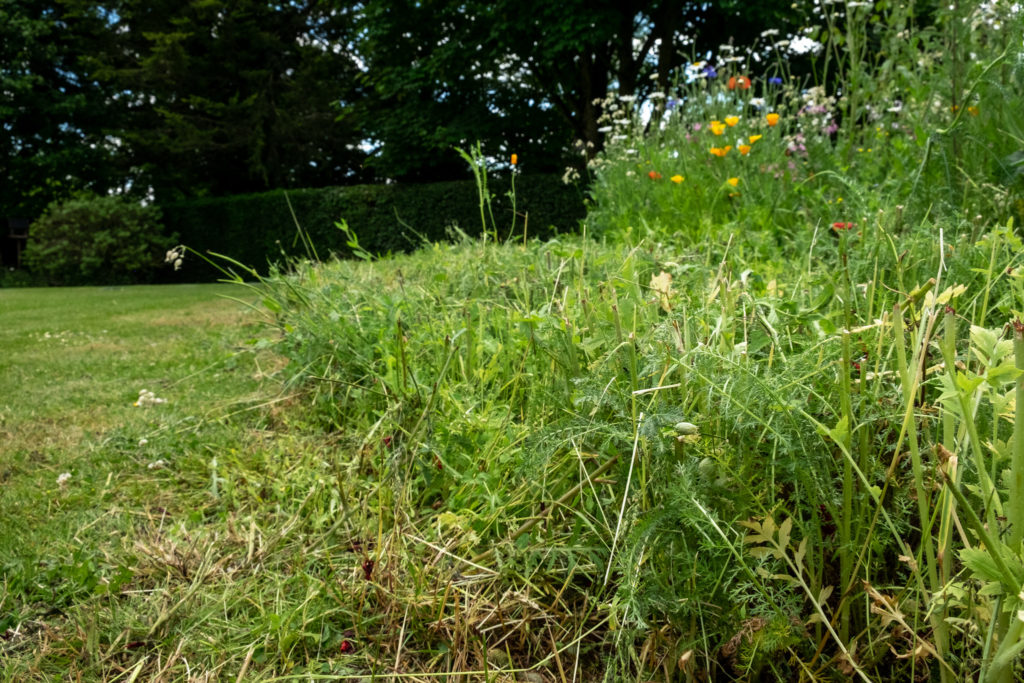
Other Considerations
Don’t overlook the ability of the design of a meadow to make future maintenance easier and achievable! Paths and margins around the outside of the meadow will allow easy access for cutting and cutting removal.
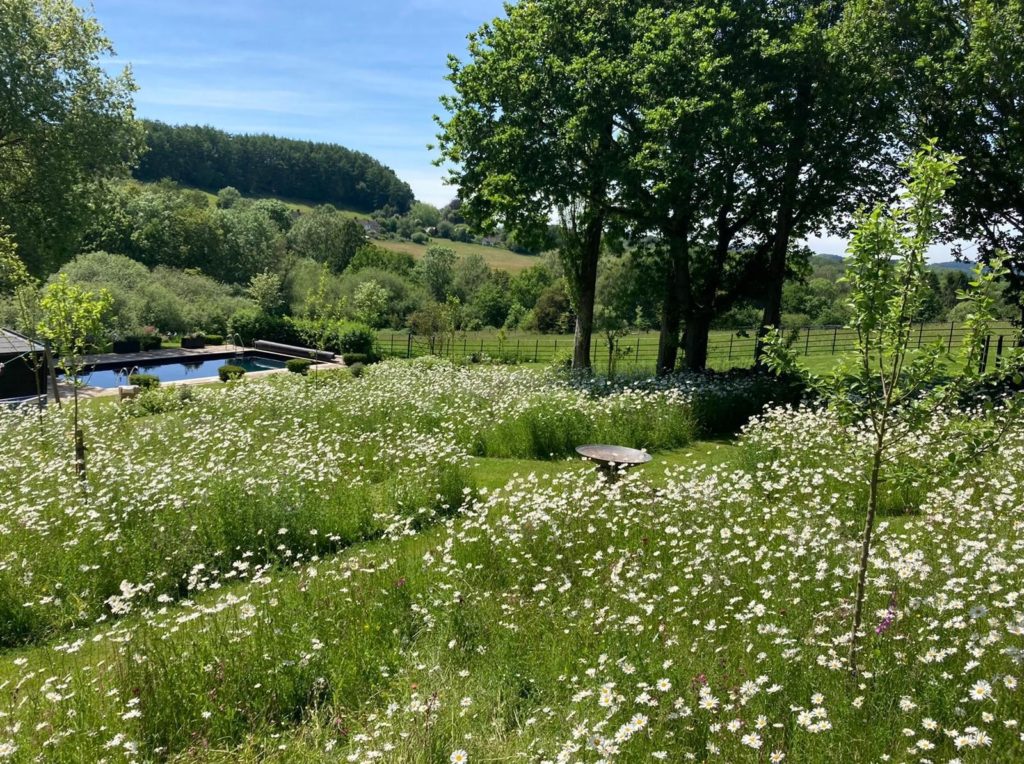
There is likely to be some need for spot-treating weeds. This can be done by digging the weeds out or spot-spraying them with glyphosate.
Leaf residue can kill a meadow quickly if left to smother wildflowers over a winter. This kill out is often attributed to shade, but it is more likely the result of leaving a thick layer of leaves in the autumn – they will sit over the flowers starving them of light and also reintroducing nutrients as they eventually break down. Cut the meadow back before leaf-drop and remove the leaves.
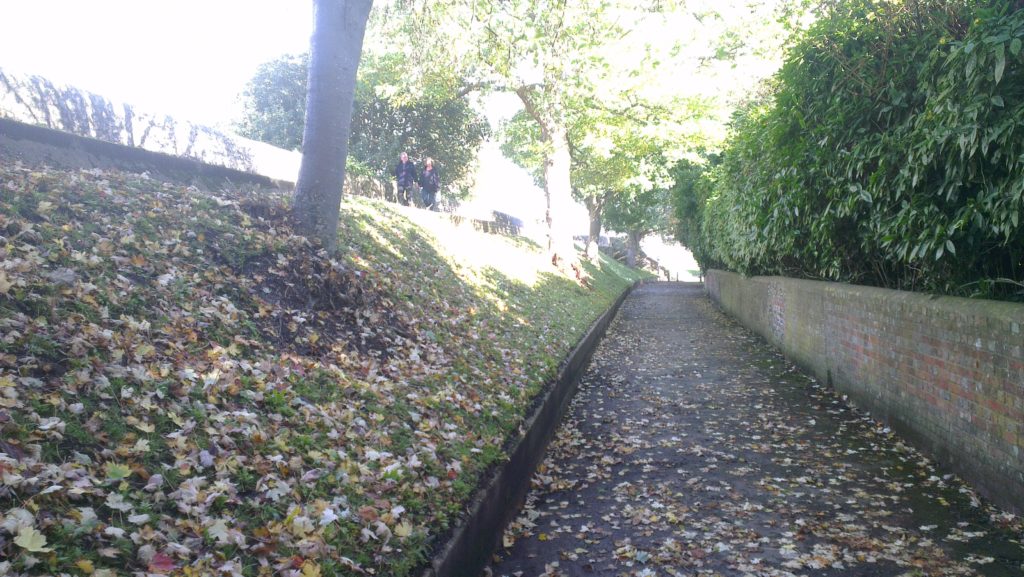
Another tip is to take care when fertilising any nearby lawns. It is possible to have a top-quality lawn immediately adjacent to a wildflower meadow (and the contrast is a lovely feature of a garden meadow) but, when applying fertiliser, treat the two areas separately – avoid fertiliser overlapping onto the wildflower area at all costs.
In conclusion, there is nothing too prescriptive about timings and methods and a well-established meadow is very forgiving and robust. However, our maintenance tips do rely on a well-established wildflower space as the starting point.
If you would like more detail on any of the above, please give us a call on 01256 771222.
You can also take a listen here to our Managing Director, James Hewetson-Brown, discussing meadow maintenance as part of our webinar series.